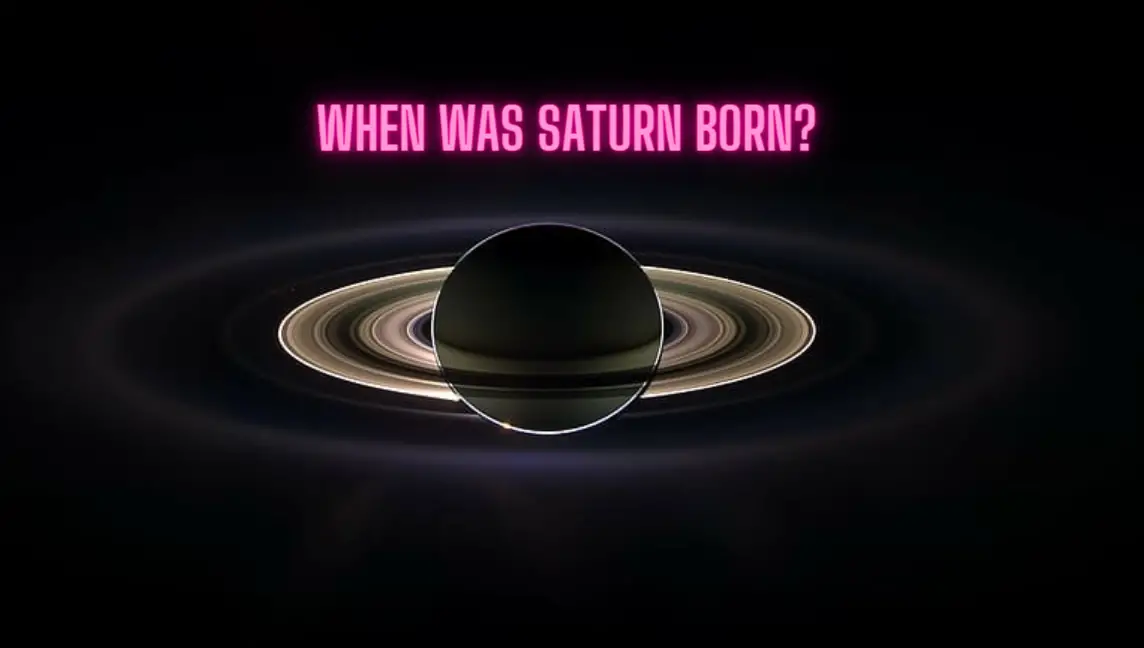Saturn, the sixth planet from the Sun and the second-largest in our solar system, has for a very long time captured the curiosity of humans due to the striking rings that it possesses and the other distinctive traits that it possesses. But exactly when did Saturn come into being? Finding out how a planet came to be requires putting together a lot of different pieces of scientific evidence and solving a lot of different puzzles about the universe, therefore it’s not a simple undertaking. Even though we do not know a precise date for when Saturn was born, scientists have made considerable breakthroughs in understanding how old it is and how it was formed.
Planetary formation, of which the study of Saturn’s origin is a subfield, is intimately connected to this topic. Approximately 4.6 billion years ago, according to the predominant theory that is currently known as the nebular hypothesis, the planets in our solar system formed from a revolving disk of gas and dust that was referred to as the protoplanetary disk. This disk was packed with a wide variety of elements and compounds, many of which would later come together to form the heavenly bodies we are familiar with today.
Scientists believe that the development of Saturn followed a process that was very similar to our own. During the course of the development of the protoplanetary disk, gravitational forces drove matter to congregate and accumulate in particular places. These accumulations eventually led to the formation of Saturn as they increased in size and mass over the course of time. Research is currently being done to determine the exact timing for how long this process will take.
The investigation of meteorites provides a significant piece of information regarding the age of Saturn. Scientists are able to get new perspectives on the early phases of the life of our solar system if they investigate the composition and isotopic ratios of particular elements found in meteorites. The age of the oldest meteorites discovered on Earth is thought to be around 4.6 billion years, which suggests that Saturn formed around the same time.
An other crucial piece of evidence originates from the investigation into the internal structure and composition of Saturn. The data obtained by the Cassini spacecraft during its exploration of Saturn and its moons from 2004 to 2017 provided significant insight into the mass, density, and interior structure of the planet. The scientists have been able to improve their theories of Saturn’s birth by combining the results of these measurements with those obtained from computer simulations.
The formation of Saturn’s core is thought to have occurred initially, and it is believed that this process took place over a period of several million years. The gaseous envelope of the planet was constructed on top of the core, which is made up of ice compounds, rocks, and metals, and acts as the foundation for the gaseous envelope. Although little is known about Saturn’s core, including its precise size and make-up, it is believed to account for only a small percentage of the planet’s overall mass.
The accretion of gas onto Saturn’s solid core was the next stage in the planet’s creation after its initial development. The protoplanetary disk eventually disintegrated, and as it did so, Saturn’s gravitational attraction gradually collected the residual gas that was present in the surrounding region. This process resulted in the formation of the planet’s recognizable rings, which are made up of an infinite number of ice and rock particles.
It is important to emphasize the fact that Saturn’s rings were not formed at the same time as the planet itself. Recent research suggests that they are only a few hundred million years old, which would place their formation within the previous few hundred million years. The gravitational interactions with one or more of Saturn’s moons or the result of a collision between two minor celestial entities are assumed to be the source of the rings. Another possibility is that the rings were formed by a collision between two small celestial bodies.
In a nutshell, the precise time of Saturn’s birth will likely never be known, but study conducted by scientists reveals that it was around 4.6 billion years ago, during the early phases of the history of our solar system, when it first formed. Scientists have gained significant insights into the processes that produced this spectacular planet through the research of the composition of meteorites, the analysis of Saturn’s internal structure, and the examination of the development of Saturn’s rings. Our knowledge of Saturn’s beginnings and development is continually expanded as a result of ongoing research into the planet and its satellites. Perhaps one day, we will find out more specific information regarding the instant that Saturn came into being as a result of this research.
![]()
